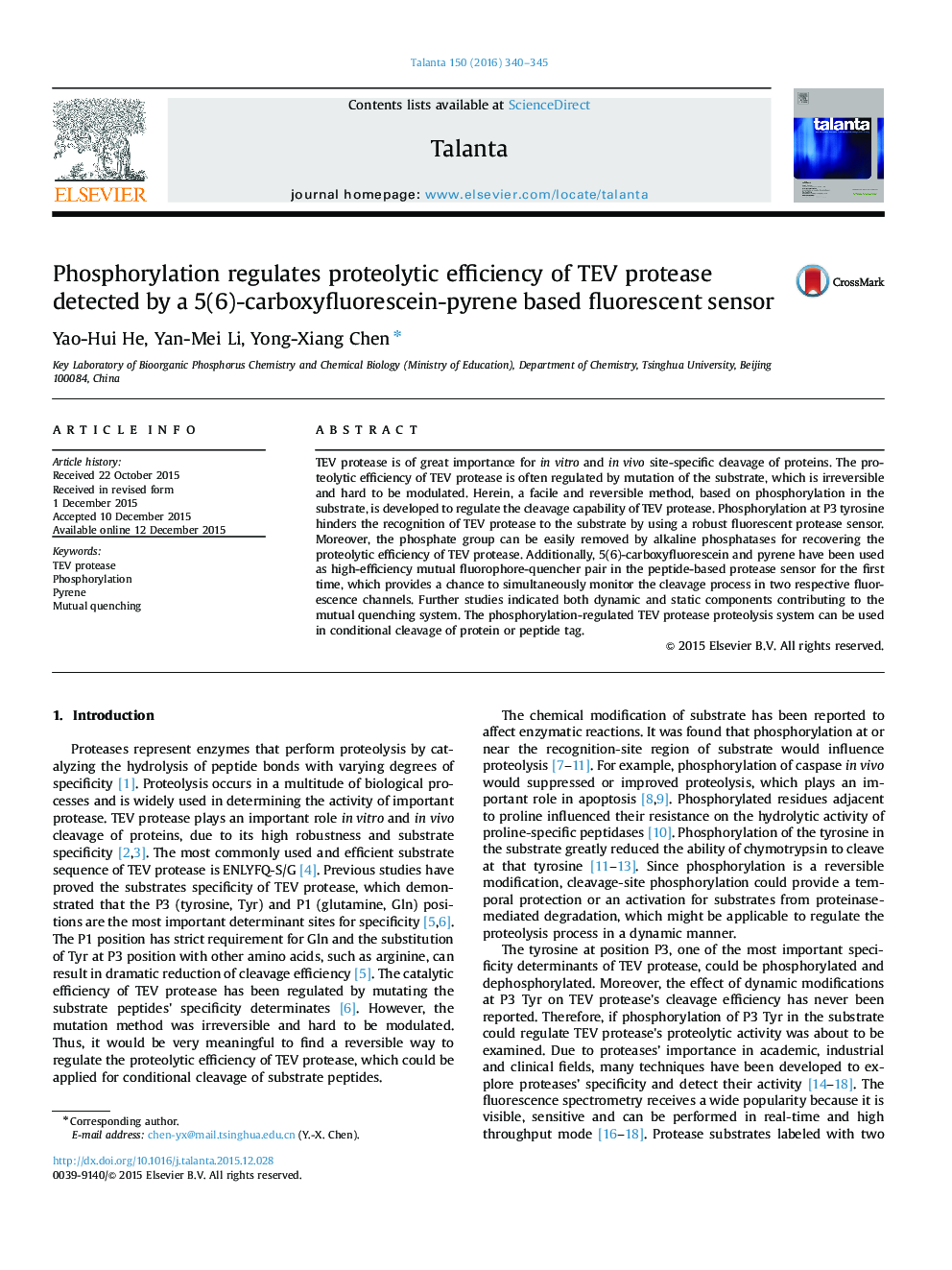| Article ID | Journal | Published Year | Pages | File Type |
|---|---|---|---|---|
| 1242180 | Talanta | 2016 | 6 Pages |
•Phosphorylation at P3 tyrosine hinders the recognition of TEV protease to the substrate.•A facile method was developed to regulate the cleavage capability of TEV protease.•A mutual quenching pair FAM-pyrene was used in the peptide-based protease sensor.
TEV protease is of great importance for in vitro and in vivo site-specific cleavage of proteins. The proteolytic efficiency of TEV protease is often regulated by mutation of the substrate, which is irreversible and hard to be modulated. Herein, a facile and reversible method, based on phosphorylation in the substrate, is developed to regulate the cleavage capability of TEV protease. Phosphorylation at P3 tyrosine hinders the recognition of TEV protease to the substrate by using a robust fluorescent protease sensor. Moreover, the phosphate group can be easily removed by alkaline phosphatases for recovering the proteolytic efficiency of TEV protease. Additionally, 5(6)-carboxyfluorescein and pyrene have been used as high-efficiency mutual fluorophore-quencher pair in the peptide-based protease sensor for the first time, which provides a chance to simultaneously monitor the cleavage process in two respective fluorescence channels. Further studies indicated both dynamic and static components contributing to the mutual quenching system. The phosphorylation-regulated TEV protease proteolysis system can be used in conditional cleavage of protein or peptide tag.
Graphical abstractWe determined that phosphorylation at P3 tyrosine severely hinders the recognition of TEV protease to the substrate using a robust fluorescent protease sensor. Moreover, the phosphate group can be easily removed by alkaline phosphatase from calf intestinal (CIP) for recovering the proteolytic efficiency of TEV protease, which fulfills conditional cleavage of peptide sequence. In addition, 5(6)-carboxyfluorescein (FAM) and pyrene (Pyr) have been used as a high-efficiency mutual fluorophore-quencher pair in the peptide-based protease sensor, which provides a chance to simultaneously monitor the cleavage process in two respective fluorescence channels.Figure optionsDownload full-size imageDownload as PowerPoint slide
